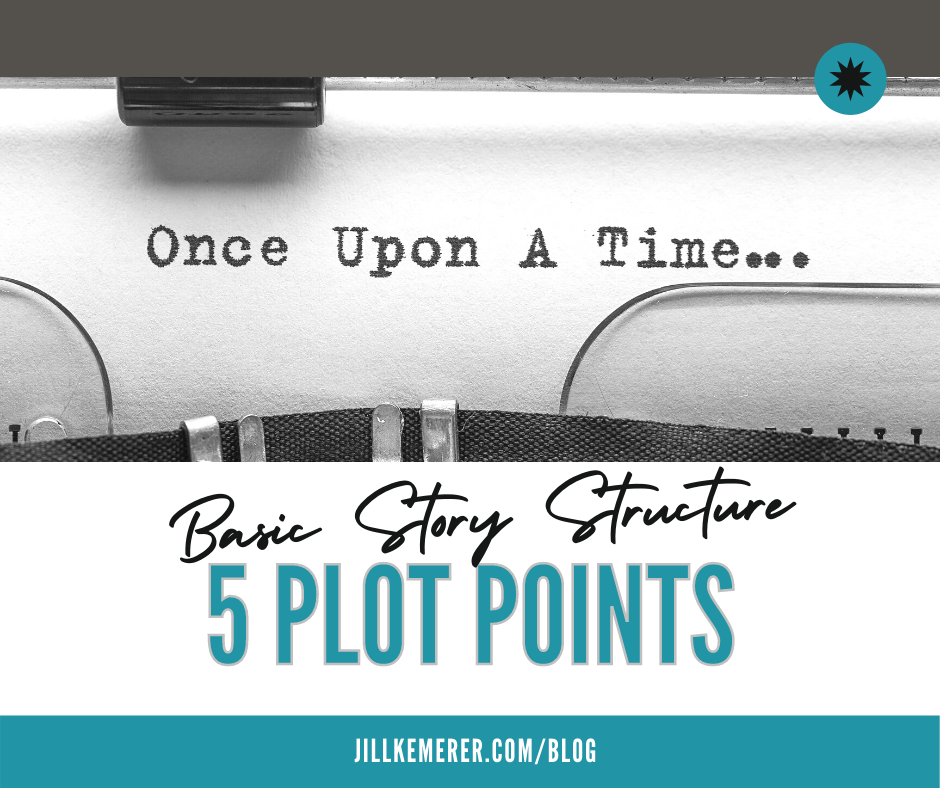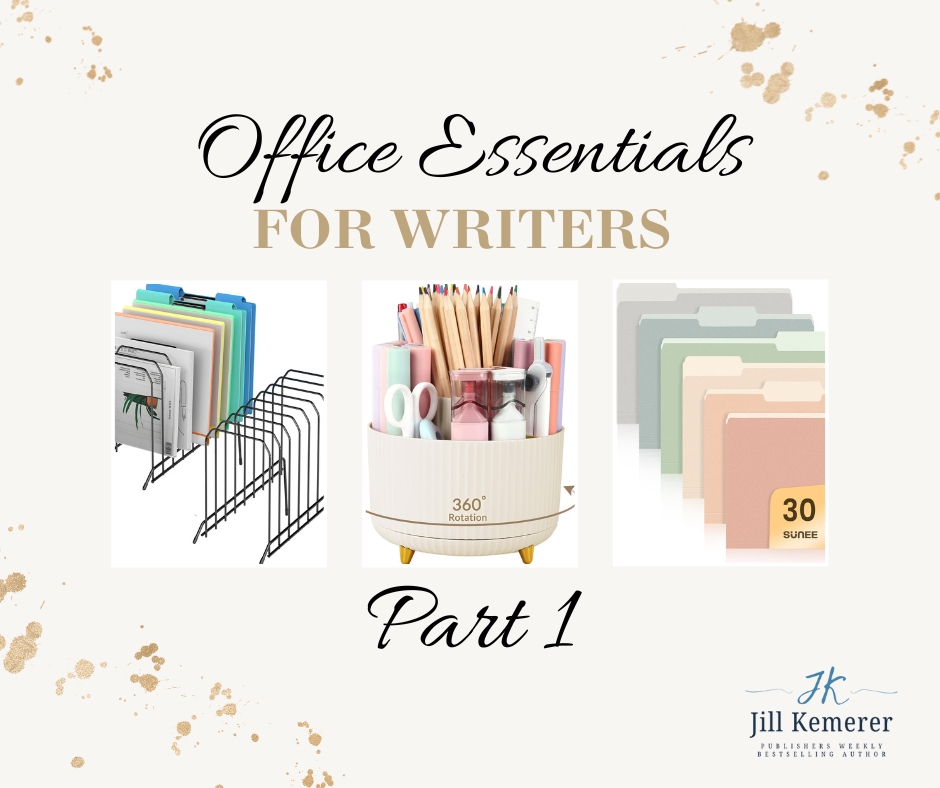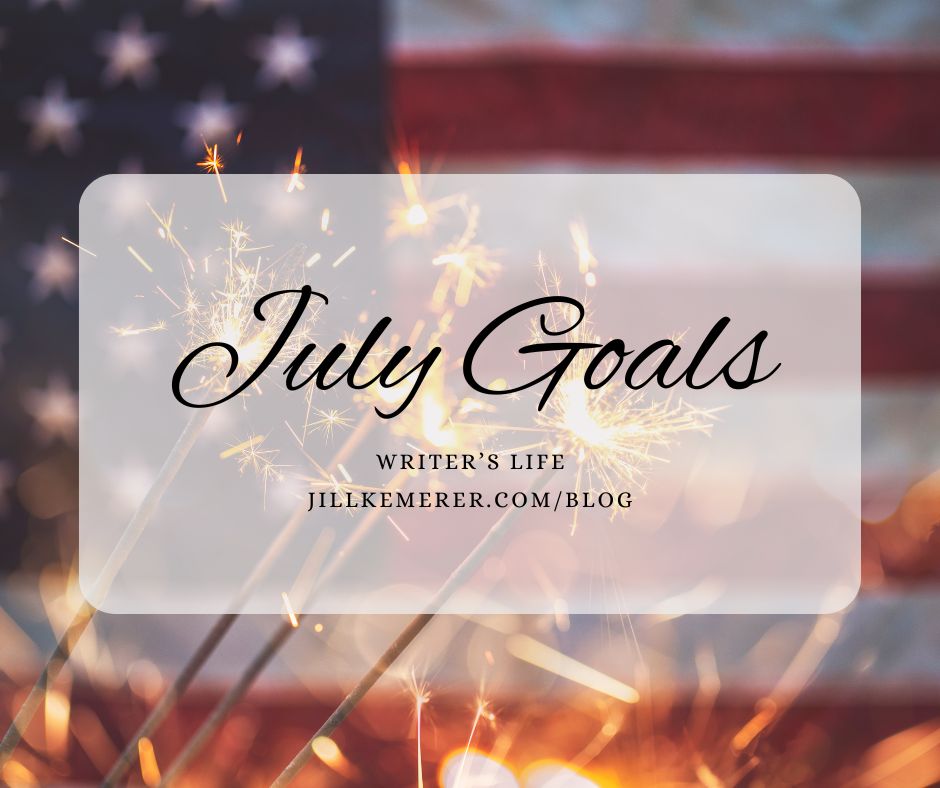My writer productivity skyrockets when I set monthly writer goals, and it’s time to share…
Basic Story Structure: 5 Plot Points
If you’re like me, you probably have twenty-plus books on the writing craft hanging around. They’re on my office shelf. Stacked on my desk. Lingering under my nightstand in my bedroom. I can’t seem to get enough books on writing!
Not only do I keep buying books (which is part of my personal continuous education plan), I review old ones periodically to refresh my skills. One of the topics I return to again and again is key plot points.
Since I’m a novelist, creating a cohesive plot is very important to me. What’s more, I write commercial fiction. Readers of commercial fiction have clear expectations for story, specifically what makes it good and what makes it compelling.
Writers don’t always know how to translate the idea in our head to the page in a cohesive way. That’s why understanding basic plot points can be so helpful for plotters (writers who plan the story out before writing) and pantsers (writers who pour the story out as it comes to them).
What I’m sharing today is my personal bare-bones, essential 5 plot points. These were derived from various plotting methods (I’ve included links at the end of the post).
One nice perk of knowing this basic story structure is that the 5 plot points make a simple synopsis. Expand on them for a more detailed synopsis.
You might have a different take on key plot points. That’s fine. Whatever works for you! This works for me.
Basic Story Structure: 5 Plot Points
- Inciting Incident: Something shakes up ordinary world
- Doorway #1: Decision to leave comfort zone
- Mid-point: False high/false low
- Black Moment: The worst happens
- Doorway #2: New Solution
Let’s take a deeper look into the story-structure elements.
1. Inciting Incident. What happens to shake up the protagonist’s ordinary world?
The ordinary world is basically just the protagonist’s normal day-to-day life. The inciting incident is when something happens to disturb this ordinary world. The main character now faces a dilemma. Does she stay in her safe, normal life? Or does a threat or a promise of something better force her out of it?
2. Doorway #1. What decision does the protagonist make as a result of this incident?
The protagonist must make a conscious decision to act. She must choose to do something outside her comfort zone to remedy the situation. This decision will have consequences and she knows it.
Readers relate to people of action, to people who make tough choices. Don’t make the mistake of writing a passive protagonist where someone else makes the decisions for them. The main character must be the ones choosing to change her life.
3. Mid-Point. The character has taken a number of actions as a result of going through doorway #1 and is now at the mid-point of the story.
This can be a false-high or a false-low.
A false-high is when she thinks she’s going to succeed (but disaster will strike soon after).
A false-low is when she thinks there’s no way she’ll succeed (but the tide will turn in her favor).
4. Black Moment: The protagonist fails.
What the protagonist hoped to accomplish by leaving her ordinary world and going through doorway #1 now appears to be unattainable. All hope is gone. She’s in dire straights.
5. Doorway #2: New solution.
The protagonist, out of options, comes up with a new solution permanently changing her life, essentially creating a new ordinary world.
Sometimes a protagonist fails to achieve her original story goal, but the new solution allows her to realize she no longer wants it or she realizes she wants a new goal. No matter what, she has permanently changed and now has a new ordinary world.
For more plot-structure advice, I highly recommend checking out Michael Hauge’s Six-Stage Plot Structure, Randy Ingermanson’s Snowflake Method, and Blake Snyder’s Save the Cat. (#ad)
You’ll see I’ve left off the sixth key plot point–the ending. The ending is vital to show how the character has changed from page one to the end. I have yet to meet a writer who has failed to write a proper ending to their novel, so I’m leaving that one to you.
How do you think of basic story structure? What are your key plot points?
Have a great day!





This is some great stuff and very helpful. As I was reading, I was checking off the points in my current projects and began thinking that my protagonists might be a bit too passive. It’s something I will definitely have to work on. Thanks for posting this and best of luck in your writing.
Thanks so much for stopping by my blog! Yes, get those characters moving–they need to make the tough decisions. They need to be actively working toward those goals. Best wishes to you!